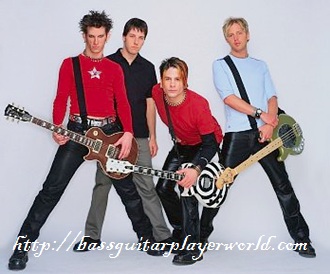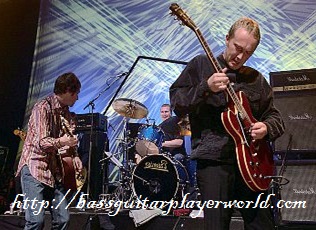Easy Rhythms for New Learners to Play With
 Beginners tend to jump head first into songs and covers, all the while overlooking the importance of developing the key skill which all the bands they love have learned, but cannot teach them; rhythm.
Beginners tend to jump head first into songs and covers, all the while overlooking the importance of developing the key skill which all the bands they love have learned, but cannot teach them; rhythm.
Rhythm is the most important aspect of music because it gives music consistency and solidity. Without rhythm skills, musicians would be playing outside of their time signatures, which in turn would lead to a jumbled mess of notes and confusion.
In short, music without rhythmic skills is simply chaos.
That being said, how can you develop rhythmic skills so that you won’t be prone to a chaotic atmosphere of noise?
In this lesson, we’ll teach you how to keep rhythm through the use of a musicians best friend and most important tool; the metronome.
So First Off, How Exactly Do you Use a Metronome?
Try turning it on, first. Notice that when the metronome clicks, no matter what speed it is on, the clicks are still evenly spaced. These clicks, when used as a source of basic time keeping, count for a single beat. That means that four total clicks would equal a full 4/4 measure of music.
This also means that each click accounts for a quarter note in value.
This brings is to our first beginner bass guitar rhythm; playing quarter notes. Set your metronome to 60bmp (slow and steady gets you farther when learning rhythm). Now play your open E string on each click. Hold the note until the next click, and then strum or pick the note again.
This is the most basic rhythm; a quarter not pattern.
Two full measures of a quarter note rhythm would be counted like this:
One, Two, Three, Four, One, Two, Three, Four

The 8th Note Rhythm
Next up, is the second most basic rhythm in music; the eighth note rhythm. For an eighth note rhythm, you will be striking the first note on the click, holding it half way, the striking again.
This means that every click should be broken up into two notes; the first half should by eighth note number one, and the second half should be eighth note number two. This is because two eighth notes are equivalent to a single quarter note.
This is the second most basic rhythm that you will come across in your playing career.
A single full measure of an eighth note rhythm would be counted like this:
One and Two and Three and Four and
The ands, or the second eighth note half of our full beat, are called the off-beat. This means that the count (the number itself) is called our on-beat.
16th Note Patterns
Finally, the last most common bass guitar rhythm you will come across is the sixteenth note pattern. Four sixteenth notes are equivalent to a full quarter note.
A single full measure of a sixteenth note rhythm would be counted as follows:
One e and a Two e and a Three e and a Four e and a
The off-beat still falls on the ‘and’, and the on-beat still falls on the number itself. The other notes are on-beat (e) and off-beat (a).
Now that you know the basic beginner bass guitar rhythms, the next step is to practice. Feel free to mix and match notes once you are comfortable, but remember to stay within a four beat value. Have fun!
Here’s a video that covers a couple of other simple rhythms that you can learn easily. Once you are more confident of your rhythm counting skills, you can also apply it by playing along to the major scales or incorporating a simple riff with some techniques like hammering on and pulling off on the bass string.
Check Out The Best Way to Learn Bass Online
If you want to go from being an average bassist to achieving a level of bass playing like a professional, JamPlay is the best resource to help you accomplish that goal in the shortest possible time. Learn from bass legends like Billy Sheehan, David Ellefson and Bryan Beller with an ever-growing library of video lessons designed to help you improve your skills.
Related Articles
Comments are closed.





